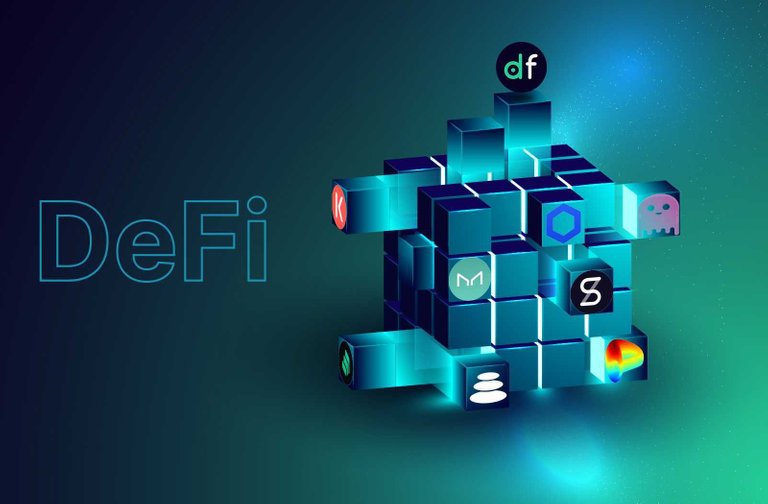
The Ethereum community has been awkwardly quiet in the face of ETH 2.0 difficulties. Many DeFi projects are playing the waiting game on implementing layer two solutions or wait for good news from Vitalik Buterin.
In the face of great interest in the cutting-edge of finance, i.e., DeFi caused Ethereum to fail (relatively speaking) in its current form. Smart contract transactions now routinely cost more than $100 to execute, and some rather complicated market equalizing flash loan transactions can up to $2000.
Even activating DeFi projects can lead to unnecessary expenditures, since associated with each action is an ETH price tag. Often entering DeFi product positions requires at least two transactions, doubling users’ expenses. While deep-pocketed DeFiers will be able to make sense of these fees, most retail investors that are looking to learn about the latest trends in crypto can only watch from the sidelines.
Since its inception via Bitcoin, crypto has been about inclusion and decentralization. Everybody could be a part, until now. By design, financial incentives are the only factor that decides who gets to use the EVM, and that’s a good thing.
However, when too many people start using the EVM for swaps, staking, farming, pooling, loaning, and governance, it becomes a real problem. We need DeFi devs to go ahead and pick one of the viable layer two solutions right now.
The main reason why DeFi projects haven’t already started implementing layer two solutions is ETH 2.0’s promise. Limited time and resources mean that this is an either-or decision, where one decision cancels the other, at least temporarily.
There is a chance that ETH 2.0 will be significantly delayed, according to Ethereum Foundation researchers, even if Vitalik Buterin disagrees. The best part of the equation is that DeFi protocol operators must collaborate. Layer 2 can only be valuable via the network effect, i.e., if many people and projects one of the following solutions:
Loopring 3.x
The Loopring protocol improves the throughput of Ethereum through zkSNARKs, ensuring as much work as possible is securely done off-chain, with verification reserved as an on-chain activity.
Smart contracts will be able to get executed and established as often as the user desires, increasing the market efficiency of DeFi platforms. Security is guaranteed when using smart contracts, provided the contract itself is not a rotten apple.
You only pay for deposit and withdrawal, and with the upcoming Rails (DXdao-powered) app, they will increase the surface area for layer two adoptions. Off-chain balances are stored in Merkle trees, eliminating the need for expensive token transfers on-chain.
Dfinance
Dfinance, a Cosmos-based project, brings decentralized infrastructure dedicated to DeFi instruments. They strive to create a better user experience for new financial products by helping developers design for people.
Dfinance’s infrastructure leverages all positive aspects of blockchains and upgrades them with high throughput, low latency, unlimited scalability, granular security, and a supreme smart contracts engine.
It uses Libra’s “Move” language and virtual machine to establish a robust development environment to execute nodes. Move provides developers with a clear cut strategy for security through its strict syntax, semantics, and ownership logic.
OMG
OMG is one of the leading contenders for Layer 2 adoption, having already been implemented for USDT by Bitfinex. The OMG Network (formerly OmiseGO) is a decentralized, public network with high transaction throughput and low-cost p2p transactions.
It can provide specific blockchain financial services worldwide, across a variety of asset classes and dapps.
This solution uses Layer 2 Plasma architecture to provide the benefits and security for dapps and their users. It is an effective way to scale up any decentralized payment system on the Ethereum network.
zkSync
zkSync is a scalable, low-cost enabler for trustless payments. This protocol can help Ethereum use zkRollup technology that implements zero-knowledge proofs and constant on-chain data connection.
The result, a layer two solution that provides mainnet-level security, low cost, and better speeds.
Beyond security, the team behind zkSync focuses on user experience and developer sanity. They understand that adoption relies on superior design and frictionless implementation, providing developers with almost no excuses as to why they aren’t already using layer 2.
Implementing Layer 2 - Dangers and risks
Layer 2 is promising. However, it would be wise to acknowledge the risks that users will have to undertake in exchange for low-cost, scalable, high throughput off-chain transactions.
The ease of transactions will attract the worst kind of individual in crypto. Scammers. They will create new dapps that use forked layer two implementations and enable users to freely interact with their malicious smart contracts siphoning crypto from their victims over time.
That’s an obvious risk.
The second, hidden risk is a total network failure. Layer 2 solutions are untested.
The risk is that the most popular layer two solutions have a catastrophic bug that enables a random hacker to siphon user funds using a zero-day hack. It’s not difficult to imagine a scenario where 50% of DeFi assets evaporate overnight.
DeFi has $8.6b in total value locked. Layer 2 will most likely encourage most current users to transfer. That’s two transactions for near-infinite, near-free, DeFi transactions.
On the other side of the spectrum, with just payments in mind, Bitcoin is already miles ahead of Ethereum. No matter how much the ETH community is pumping their chests, saying that “Bitcoin is a fossil,” facts are facts.
Bitcoin’s layer two solutions “The Lightning Network,” has accumulated ~$11m USD for one singular purpose, payments. After two years of operations, it has avoided total failure, but not vulnerabilities.
Ethereum and DeFi developers need to open themselves to the risk of failure to create a sustainable ecosystem, of which Layer 2 is going to be an integral part.
Posted from my blog with SteemPress : https://cryptohype.tech/4-defi-focused-layer-2-networks-built-on-ethereum/
Do you have any opinion on MATIC?